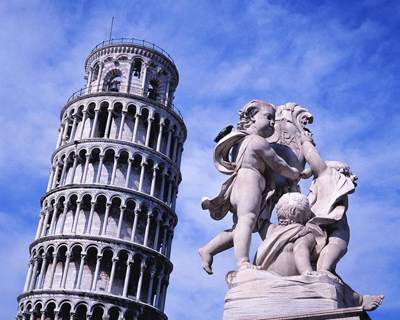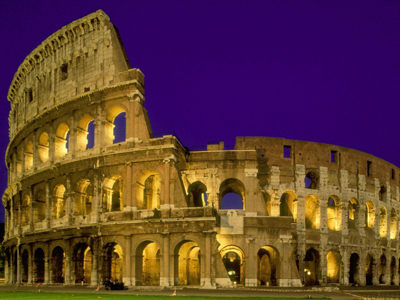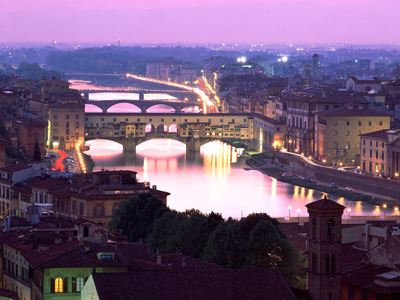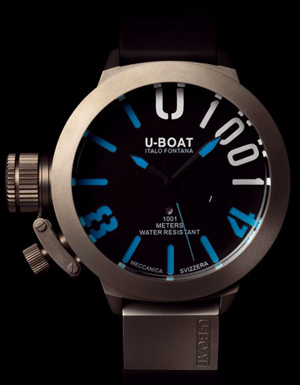Italian watches – the splendor of impeccable style!!!
Italy… At the bare mention of this wonderful country we imagine the sandy beaches and the Mediterranean sea, warmed under the generous Italian sun; Venice with its numerous water pavements, full of romance and love; and, of course, Rome with its Coliseum and chapels, where such great people, as Leonardo Da Vinci, Rafael, Michelangelo, left the pieces of their souls forever. beaches and the Mediterranean sea, warmed under the generous Italian sun; Venice with its numerous water pavements, full of romance and love; and, of course, Rome with its Coliseum and chapels, where such great people, as Leonardo Da Vinci, Rafael, Michelangelo, left the pieces of their souls forever.
Italy made an invaluable contribution to the history. The Italian paintings, architecture, cuisine, clothes and, of course, the Italian watches are very popular around the world and considered to be one of the most important parts of world culture. Many masterpieces of Italian art and architecture are a cultural heritage and property of the whole humanity: they are simply priceless. However, to understand and estimate this wonderful sunny region with its spirited population in full it’s necessary to learn how such divine country under the name of Italy has appeared. We’ll start from its name. The etymology of the word “Italy” isn’t known yet. The most popular point of view says that the term was adopted from Greece and literally means “the country of calves”. And it’s not by chance: the bull, which often butted the Roman she-wolf at the paintings, was a symbol of people, inhabiting the South of Italy. At the beginning the name “Italy” was applied only to the territory of current South Italy (Calabria Province).
«Qui rempublicam salvam vult, me sequatur» (Whoever wants the republic to be saved, let him follow me)
The modern Italy is built on the base of ancient Rome, founded in the VIII century B.C.E. (in 753 B.C.E.). The ancient Rome is one of the most powerful civilizations of ancient world. Its name was given after its main city – Roma. Its legendary founder Romulus gave the name of that city. The country was at the height of power in the II century A.D. Then the territories from modern Scotland on the north to Ethiopia on the south, from Armenia on the east to Portugal on the west were under the reign of ancient Rome. The ancient Rome gave modern epoch much: the Roman law, which is the base of modern law; such architectural forms, as arch and cupola; and also such structure as wheel watermill. The Christianity – the most widespread religion – was born on the territory of the Roman Empire. Truly, the Roman Empire gave us much.
Epoch of titans: “Have courage to use your own understanding!”
 Perhaps, the brightest page in the Italian history is the Renaissance. This French word (the Italian “Rinascimento”) means “newly born, revived”, i.e. the revival of antique culture. This amazing and wonderful epoch in the history of Europe, which was born in Italy, changed the cruel Middle Ages and preceded the culture of new times. The Renaissance lasted from the beginning of XIV century to the last quarter of XVI century. The social nature of culture and increased interest to personality became the distinguishing features of the Renaissance. To understand the essence of the Renaissance in full, it’s necessary, first of all, to learn how that culture paradigm appeared. Perhaps, the brightest page in the Italian history is the Renaissance. This French word (the Italian “Rinascimento”) means “newly born, revived”, i.e. the revival of antique culture. This amazing and wonderful epoch in the history of Europe, which was born in Italy, changed the cruel Middle Ages and preceded the culture of new times. The Renaissance lasted from the beginning of XIV century to the last quarter of XVI century. The social nature of culture and increased interest to personality became the distinguishing features of the Renaissance. To understand the essence of the Renaissance in full, it’s necessary, first of all, to learn how that culture paradigm appeared.
In that period the number of republican cities, where the non-feudal traders, craftsmen and bankers influenced much, was growing. The ascetic way of life and hierarchical value system, created by medieval church, were strange to the society of that time. As a result, such socio-philosophical movement, as humanism, considering the man as a personality and his freedom and workmanship as the highest values, appeared. Soon, the social centers of science and art appeared in many cities. The Church didn’t control their activity, like it did in the Middle Ages. That new culture paradigm was created on base of antique world-view because of its humanistic and non-ascetic relation. The book-printing, which opened the doors for spreading the heritage of antique and new epochs over Europe, wasn’t created in the Renaissance in the XV century by chance. As it was said before, the motherland of Renaissance is Italy, where the monuments of that wonderful epoch are kept in their original state to the present day. The first traces of Renaissance can be seen in the XIII and XIV centuries (for example, the creative work of Pisano family, Giotto, Orcagna and others), however, they widespread only from 20s of the XV century. By the end of XV century the Renaissance had achieved its bloom. In the XVI century the crisis of Renaissance ideas was brewing, and, as a result, the mannerism and baroque appeared. The Italian Renaissance is usually divided into 5 stages. As that epoch is truly unique and wonderful, it is worth considering each stage more carefully and learning the beautiful masterpieces and architectural structures, the elements of which are traced in many creation spheres today, including the haute horlogerie. So, let’s start from the first stage – the Proto-renaissance. This period, linked with Roman and Gothic traditions, is a kind of preparation for the Renaissance. This stage consists of 2 periods: before and after the death of Giotto di Bondone (1337). The most outstanding discoveries were made just during the first period. Then the plague happened at the second period that put heavy brakes on that stage. At the end of XIII century, in Florence, Arnolfo di Cambio raised the main temple – The Cathedral of Santa Maria del Fiore. Giotto, who was considered to be a painting reformer, is one of the most outstanding personalities of the Proto-renaissance. The introduction of more solid and relief forms, more plastic figures, and interior representation in painting were the distinguishing features of his works. The second stage is the Early Renaissance, lasted from 1420 to 1500. At that stage the artists walk away from the medieval style and use the samples of antique epoch. The High Renaissance – the third period from 1500 to 1527 – is the most efficient stage, when the most wonderful masterpieces of that epoch were created. At that time the Italian art was concentrated in Rome because Julius II acceded to the Pope’s throne. He attracted the best artists of that time to his court. Many monuments, excellent sculptures, perfect paintings and frescos – pearls of painting – are created at that period. The fourth stage – the Late Renaissance – lasted from 1530 to 1590 – 1620. Such outstanding masters, as Titian and Palladio, were working in Venice at that stage. The fifth stage is marked by the Renaissance spread all over the continent and named the Northern Renaissance. The Northern Renaissance of Germany, Netherlands and France differ from the Italian Renaissance by the painting style: less attention was paid to antique heritage research and human anatomical organization cognition. No doubt, the wonderful architecture of the Renaissance is one of the brightest pages of the Italian history. Today more and more often we can see the specific architectural forms and elements of the Renaissance. The symmetry, proportions and order of constituent parts were paid much attention in the Renaissance as well as they are paid today. All constructions were distinguished by a maximum symmetry of constituent parts: columns, strippilasters and lintels ordering and construction obtained symmetrical lines thanks to arches, hemispheres of cupolas, niches. Modern Italy keeps all the most beautiful creations of all epochs, taking place at its territory and leaving indelible trace everywhere. You may ask how the watch art refers to Italy. Well, the spirited Italians indeed made a great contribution in the development of watchmaking. Thanks to their high creative potential, they changed the modern wrist watches into bright, original and very popular accessories. But don’t be fast.
“As a well-spent day brings happy sleep, so a life well spent brings happy death”
The concept of constant watch balance, the basis of watchmaking, was offered by Galileo Galilei. And later, in 658, a Dutch physician Christiaan Huygens designed a pendulum mechanism. However, one of the most famous Italian “watchmakers” is Leonardo Da Vinci – an outstanding personality, who became the founder of High Renaissance and made an invaluable contribution into the development of science, architecture and painting. Undoubtedly, Leonardo Da Vinci is a genius of not only his epoch, but the whole history. His theoretical contribution into science is purely priceless and refers to his researches by “gravity, power, pressure and stroke… children of movement…”. His illustrations of mechanisms’ constituent parts and various devices for translation of motion are kept till today. Five different mechanisms like hoist, lever, block (winch), wedge and screw, know since antique times, were applied by Leonardo in various complicated structure, by means of which various processes were automated. The genius paid much attention to the screws, which were carefully considered in his treatise “About screw nature and application, about how many perpetual screws can be made and how to supplement them with gear wheels”. The mechanisms of Leonardo were able to translate the motion and transform the continuous motion into variable. He also created the alarm, which rubbed the sleeper’s feet or drop him to the floor. We can safely say that the basis of all watch art was laid down by those Italian geniuses indeed. by Galileo Galilei. And later, in 658, a Dutch physician Christiaan Huygens designed a pendulum mechanism. However, one of the most famous Italian “watchmakers” is Leonardo Da Vinci – an outstanding personality, who became the founder of High Renaissance and made an invaluable contribution into the development of science, architecture and painting. Undoubtedly, Leonardo Da Vinci is a genius of not only his epoch, but the whole history. His theoretical contribution into science is purely priceless and refers to his researches by “gravity, power, pressure and stroke… children of movement…”. His illustrations of mechanisms’ constituent parts and various devices for translation of motion are kept till today. Five different mechanisms like hoist, lever, block (winch), wedge and screw, know since antique times, were applied by Leonardo in various complicated structure, by means of which various processes were automated. The genius paid much attention to the screws, which were carefully considered in his treatise “About screw nature and application, about how many perpetual screws can be made and how to supplement them with gear wheels”. The mechanisms of Leonardo were able to translate the motion and transform the continuous motion into variable. He also created the alarm, which rubbed the sleeper’s feet or drop him to the floor. We can safely say that the basis of all watch art was laid down by those Italian geniuses indeed.
“If the watch model is popular in Italy, it will be popular all over the world”
Many famous watch companies were born just in Italy, more truly in Florence, and later moved to Switzerland. Many of them were forgotten, however, such companies, as Officine Panerai, Bvlgary, Anonimo and Locman, are very popular today. For example, when we speak about the watch manufactory Panerai, founded in Florence in far 1860, the Italian watches “Panerai Radiomir” and “Panerai Luminor”, the first luminescent watches for diving, immediately come back. Those two models were created by special order of dictator Mussolini in 1938 for the Italian divers-saboteurs. Those watches became popular with their completely extraordinary design, which differed from Swiss sophistication much. Well-rounded case of impressive cushion-shaped form, rather convex glass, watch indexes, enormous numerals and collar-like strap – all this is far from sophisticated Swiss watch movement. After Richmont Group owned Officine Panerai, the Italian watch company “Anonimo”, founded in Florence in 1997 by Federico Massacesi, became the main pride and embodiment of Italian watch industry. When Officine Panerai moved to Swiss watch market, the collaboration with the Italian Navy passed to the young Italian watch company “Anonimo”. The brand’s name has not been chosen by chance: the Italian watches were designed to tell only about individual.  The Italian watches of Anonimo are quite able to realize the main idea of their creator, as they are rather original. It should be noted that ex-CEO of Officine Panerai Dino Zei, who managed to gather a team of qualified Panerai watchmakers and organize the manufacture of Anonimo Florentine Militare, played an important role in the destiny of company. As a result of collaboration with Dino Zei, the luxurious mechanical watches, delighted the collectors and glorified the Italian watches around the world, were released. Apart from design, the Anonimo watches are provided with various innovative characteristics and distinguished by ergonomic effectiveness, multifunctionality and water-resistance. The special love for big logos and numerals distinguishes the Italian watch industry among all other “restrained” watch manufactories. It looks like all those bulky elements of design passed to the Italian craftsmen from their talented predecessors of Renaissance. The Italian watches are especially original: sometimes they overshadow their owners. Locman, which became popular with its bold combination of materials and bright colors, is the favorite Italian watch brand of most celebrities around the world. The Italians indeed were the reason why the Swiss watches became so bright, as they created a special cult of things, luxurious things. The Italian watches of Anonimo are quite able to realize the main idea of their creator, as they are rather original. It should be noted that ex-CEO of Officine Panerai Dino Zei, who managed to gather a team of qualified Panerai watchmakers and organize the manufacture of Anonimo Florentine Militare, played an important role in the destiny of company. As a result of collaboration with Dino Zei, the luxurious mechanical watches, delighted the collectors and glorified the Italian watches around the world, were released. Apart from design, the Anonimo watches are provided with various innovative characteristics and distinguished by ergonomic effectiveness, multifunctionality and water-resistance. The special love for big logos and numerals distinguishes the Italian watch industry among all other “restrained” watch manufactories. It looks like all those bulky elements of design passed to the Italian craftsmen from their talented predecessors of Renaissance. The Italian watches are especially original: sometimes they overshadow their owners. Locman, which became popular with its bold combination of materials and bright colors, is the favorite Italian watch brand of most celebrities around the world. The Italians indeed were the reason why the Swiss watches became so bright, as they created a special cult of things, luxurious things.
Today the Italian designers are mostly focused on design of their watches. Due to their designer talent, the Swiss watches don’t look ordinary and monotonous. The Italian watches are distinguished by their luxurious and sometimes shocking appearance. The wrist watches “Gerald Genta” are an outstanding example of shocking design. Despite the fact that it is a Swiss company, its founder and creator of these unique and luxurious watches – Gerald Genta – is Italian. The Italian sense of style and “signature” are traced in all models of Swiss watches with Italian spirit.
All Italian watches are like pierced with special spirit of past epochs; their design is casted with various beautiful architectural structures and elements of painting. That’s why all famous fashion brands, like Roberto Cavalli, Moschino, Benetton, Blumarine, Just Cavalli and Emporio Armani, were born in Italy indeed. It will be enough just to mention Gucci Group, and the scope of Italian watch industry will become clear. Gucci Group includes such brands, as Gucci, YSL, Boucheron and Bedat&Co, which produce watches, close to high art by their characteristics and design. Today every fashion house creates its own watch line, sometimes refreshing it and supplying to the market at quite moderate price. No doubt, everyone will like to purchase a watch of true Italian origin at reasonable price. However, the watches of fashion house are not always made by its designers. For example, the world-know brand D&G orders the watches from the Milan watch company “Binda”.
The Italian watches are created just like Italian luxurious cars. The Italian cars are not created for their owners, but sooner for those around them, who would shake with envy at the sight of lux cars. And this is the main principle of the Italian wrist watches, which are designed to become the brightest detail of anyone’s appearance. It’s not by chance that various watch magazines and catalogues are issued in enormous editions just in Italy. And while the oligarchs around the world and oil sheikhs read the Italian periodicals, they will prefer the Italian watches indeed due to their luxurious and exclusive design, and also perfect quality. After all I would like to tell a joke: “At the design competition in Italy the designers had a task to make a line form one point to another. No one could”. This joke tells about unlimited talent of Italian designers in various design sophistications, who are not able to make anything so ordinary and usual, as a straight line.
Wrist watches “Officine Panerai Luminor Submersible 1950 3 Days Automatic Bronzo 47 mm” – going back to the basics!
.jpg) The famous Swiss watch company with Italian roots “Officine Panerai” created a reviewed version of its legendary watches “Luminor”, which was given a long, but loud name - “Officine Panerai Luminor Submersible 1950 3 Days Automatic Bronzo 47 mm”. We didn’t mention the Italian roots by chance, as Officine Panerai was founded in 1860 in the Italian city, Florence, by Giovanni Panerai. In the beginning the company was specialized in manufacture of measuring devices for the Navy. Soon the company added the wrist watches to its list of measuring products and started specializing in them. The wrist watches “Officine Panerai Luminor Submersible 1950 3 Days Automatic Bronzo 47 mm” are the renewed version of watches, issued for the Egyptian Navy. The material – bronze – became the distinguishing feature of that model. The 47 mm diameter case is crafted in bronze CuSn8 – an alloy of copper and tin, highly resistant to water corrosion and atmospheric condensation, having structural strength and excellent appearance. Over all period of use the bronze preserves its original warm tones – it’s the main feature of this material. In the course of time the bronze obtains patina (matt surface) – the result of bronze reaction on such external factors, as air, humidity, temperature and wear. However, these factors don’t change the material’s amazing features, but change the bronze wrist watches into unique and original models. One of the advantages of model is one-way bezel for diving with time scale for diving measuring. The crown is provided with a special protection system, which prevents the crown from random scrolling. The green dial perfectly matches the unique tone of bronze case. The date aperture is at 3 hours, and the small second dial – at 9 hours. The hands and indexes are luminescent. The dial and back case are covered with solid sapphire glass. The 72-hour power reserve is provided by in-house automatic movement of Officine Panerai Luminor Submersible 1950 3 Days Automatic Bronzo 47 mm, which was designed in the workshop of Officine Panerai. The movement consists of 197 components on 28 jewelries. The frequency makes up 28800 a/h. The brown strap is made of leather and equipped with reliable titanic buckle. The water resistance of model makes up 300 meters of depth. The famous Swiss watch company with Italian roots “Officine Panerai” created a reviewed version of its legendary watches “Luminor”, which was given a long, but loud name - “Officine Panerai Luminor Submersible 1950 3 Days Automatic Bronzo 47 mm”. We didn’t mention the Italian roots by chance, as Officine Panerai was founded in 1860 in the Italian city, Florence, by Giovanni Panerai. In the beginning the company was specialized in manufacture of measuring devices for the Navy. Soon the company added the wrist watches to its list of measuring products and started specializing in them. The wrist watches “Officine Panerai Luminor Submersible 1950 3 Days Automatic Bronzo 47 mm” are the renewed version of watches, issued for the Egyptian Navy. The material – bronze – became the distinguishing feature of that model. The 47 mm diameter case is crafted in bronze CuSn8 – an alloy of copper and tin, highly resistant to water corrosion and atmospheric condensation, having structural strength and excellent appearance. Over all period of use the bronze preserves its original warm tones – it’s the main feature of this material. In the course of time the bronze obtains patina (matt surface) – the result of bronze reaction on such external factors, as air, humidity, temperature and wear. However, these factors don’t change the material’s amazing features, but change the bronze wrist watches into unique and original models. One of the advantages of model is one-way bezel for diving with time scale for diving measuring. The crown is provided with a special protection system, which prevents the crown from random scrolling. The green dial perfectly matches the unique tone of bronze case. The date aperture is at 3 hours, and the small second dial – at 9 hours. The hands and indexes are luminescent. The dial and back case are covered with solid sapphire glass. The 72-hour power reserve is provided by in-house automatic movement of Officine Panerai Luminor Submersible 1950 3 Days Automatic Bronzo 47 mm, which was designed in the workshop of Officine Panerai. The movement consists of 197 components on 28 jewelries. The frequency makes up 28800 a/h. The brown strap is made of leather and equipped with reliable titanic buckle. The water resistance of model makes up 300 meters of depth.
The wrist watches “Officine Panerai Luminor Submersible 1950 3 Days Automatic Bronzo 47 mm” are a real exclusive godsend, as the watch company released only 1000 pieces of that luxurious and legendary chronometer.
Wrist watches “Anonimo Militare Automatico Drass” – truly Italian watches!
Founded in 1997, the young watch company.jpg) “Anonimo” managed to win the status of one of the most respectable Italian watch manufactories, which wrist watches are very popular around the world. The Italian watches “Anonimo” can be justly considered as luxurious and exclusive chronometers for real men, combining all design and technological innovations of the Italian company. The Anonimo watches are created according to the Florentine watchmaking traditions and truly luxurious Italian design. Today Anonimo is the embodiment of watchmaking and the only company in the world, making cases of its watches by cutting them from drafts. “Anonimo” managed to win the status of one of the most respectable Italian watch manufactories, which wrist watches are very popular around the world. The Italian watches “Anonimo” can be justly considered as luxurious and exclusive chronometers for real men, combining all design and technological innovations of the Italian company. The Anonimo watches are created according to the Florentine watchmaking traditions and truly luxurious Italian design. Today Anonimo is the embodiment of watchmaking and the only company in the world, making cases of its watches by cutting them from drafts.
All Italian watches of Anonimo are unique and exclusive, however, there is one special model – Anonimo Militare Automatico Drass – from Militare Line, which the company presented in 2011. This is a real man watch for those, who want to purchase a reliable and original wrist watch. The 43.4 mm diameter case of Anonimo Militare Automatico Drass is made of high quality stainless steel. The black dial with luminescent hands and indexes is covered with solid sapphire glass. The date aperture is at 6 hours; the small second dial – at 12 hours. The crown at the bottom of case is provided with protection system, preventing form random scroll and moisture penetration – the main enemy of watches. The 42-hour power reserve is provided by an automatic movement. The black strap is made of Kodiak – an innovative development of the company. The essence of this innovation is the following: reliability of wrist watch depends on reliability of strap. The natural leather, used in watch strap manufacture, is rather sensible to salt water. The company applies waterproofing materials, which bridge the leather pores and doesn’t let the accumulated moisture evaporate. The Kodiak Anonimo solution – the treatment of natural leather – keeps the pores clean and raises the moisture evaporation degree. The Kodiak strap penetrates the moisture, but after drying it acquires its original appearance without any damages of the strap natural leather. The water resistance makes up 120 m.
The Italian watches of Anonimo will fully emphasize your individuality and soon become an integral part of your wrist. Anonimo Militare Automatico Drass combine all values of the company: honesty, originality, necessity and perfection.
Italian watches “U-boat Classico 1001” – new design ideas and technical achievements!
 The watch company “U-boat” is a famous Italian watch brand, which launched its first wrist watches in 1942 for the Italian Navy. The Italian watches of U-boat were designed by Ivo Fontana in the laboratory of Officine Fontana. They differed much from ordinary sophisticated watches and were out of simple watch perception framework. All models of U-boat were designed specially for military men; that is why they were provided with high functionality and rather bulky design: massive case, perfectly readable dial with enormous Arab numerals. They also differed by one more feature: the crown is at the left side of case that makes the watch more functional and safe. However, the manufacture of U-boat watches was stopped because of the war, and only in 1999, thanks to the grandson of Ivo Fontana – Italo Fontana – the mass production of U-boat watches was launched. Today all models of U-boat have the same perfect and reliable characteristics, as their legendary predecessors. The watch company “U-boat” is a famous Italian watch brand, which launched its first wrist watches in 1942 for the Italian Navy. The Italian watches of U-boat were designed by Ivo Fontana in the laboratory of Officine Fontana. They differed much from ordinary sophisticated watches and were out of simple watch perception framework. All models of U-boat were designed specially for military men; that is why they were provided with high functionality and rather bulky design: massive case, perfectly readable dial with enormous Arab numerals. They also differed by one more feature: the crown is at the left side of case that makes the watch more functional and safe. However, the manufacture of U-boat watches was stopped because of the war, and only in 1999, thanks to the grandson of Ivo Fontana – Italo Fontana – the mass production of U-boat watches was launched. Today all models of U-boat have the same perfect and reliable characteristics, as their legendary predecessors.
The Italian wrist watches “U-boat Classico 1001”, perfectly combining the main technical and design ideas of talented Italian designers, are an outstanding example of specific design and new vision of U-boat. U-boat Classico 1001 is a rather bold self-winding mechanical watch in its technical and designer decisions. The perfect round case is made of solid titanium and represent a quite massive structure: its diameter makes up 55 mm at only 4,6 mm height and 205 g weight that makes it one of the biggest wrist watches in the world. The Italian watches “U-boat Classico 1001” can endure the pressure of 101 ATM and preserve the water resistance at 1001 m depth that gave the model’s name. Like their legendary predecessors, the wrist watches of U-boat have a distinguishing feature: the crown is situated at the left side of titanium case and protected with helium safety valve. The power reserve of this “serious” model is 40 hours. The black dial is covered with solid sapphire glass of 5,5 mm thickness. The dial color combination is quite bold: the bright blue indexes and hands are notable at black dial that makes them most readable. The back case is adorned with engraving with “1001” serial number. The date aperture is at 4 hours. The black hypoallergenic strap, connected with case by titanium staples, is made of rubber and provided with reliable folding buckle. The Italian watch “U-boat Classico 1001” is an exclusive appanage for serious men. Totally, 1001 pieces of that luxurious chronometer were released.
Wrist watches “Locman Teseo Tesei” – embodiment of Italian courage!
(1).jpg) The Italian watch company “Locman” is the favorite wrist watch brand of many Hollywood celebrities. Locman was founded in 1986 by Mark Mantovani on the Italian island Elba – one of the most picturesque places of Toscana – and managed to win popularity among the celebrities in a short time. The Locman watches are, first of all, designer watches of bright and extraordinary Italian style and Swiss quality. The designers of “Locman” watch company surprise with bold combinations of bright colors and materials. However, despite their quite “cheerful” look, the quality of Locman wrist watches is high. It looks like the watch says “Look at me” and at its owner naturally. The Italian watch company “Locman” is the favorite wrist watch brand of many Hollywood celebrities. Locman was founded in 1986 by Mark Mantovani on the Italian island Elba – one of the most picturesque places of Toscana – and managed to win popularity among the celebrities in a short time. The Locman watches are, first of all, designer watches of bright and extraordinary Italian style and Swiss quality. The designers of “Locman” watch company surprise with bold combinations of bright colors and materials. However, despite their quite “cheerful” look, the quality of Locman wrist watches is high. It looks like the watch says “Look at me” and at its owner naturally.
An excellent model of limited wrist watches “Teseo Tesei” – a quite interesting creation of the Italian designers – is an outstanding example of all aforesaid. Teseo Tesei is not just another model of Locman, it is a tribute to the Italian heroes of Second World War. One of such heroes was Teseo Tesei – a legendary diver, who was born in Marina de Campo on the Elba. At the first days of Second World War it became clear that Italy needed “a unique weapon”, which would allow equalizing forces for further fights thanks to its unexpectedness, to strike a heavy and shuttering blow to the enemy’s fleet. “The effectiveness of this weapon will depend on unexpectedness of its use, in other words, on keeping private the fact of its existence, - remembered Junio Borghese in his memoirs, issued after the war. – But the use of weapon must be mass. They must be at many objects at the same time, as being revealed the possibilities of their use will be limited, and the use itself will become significantly more difficult and risky”.
Just in that right time and in right place the friends Tezeo Tezei and Elios Toschi – the lieutenants of Navy Engineering Service, who saw duty in submarines union in La Spezia – appeared. They offered “a unique weapon” indeed. At the base of good old weapon the lieutenants contributed new technical innovations and made the drafts of unseen weapon. The new amazing weapon represented something like torpedo of 670 cm, equipped with powerful electric engine and control devices – steering-wheel and others. That new structure was run by two “pilots” at the top. They were protected with diver’s suits and special traps from waves. Soon Tesei and Toschi got dressed in diver’s suits, set in their “man-torpedo”, dived and during all the following time imperceptibly maneuvered, emerging from time to time. Thanks to the courage of such heroes as Teseo Tesei, Italy managed to bear the shattering strokes of British Navy. No doubt, Teseo Tesei is the hero, who the beautiful chronometer from Locman should be devoted to. The Italian watches Teseo Tesei appeared as a result of Locman’s collaboration with the Italian Forces, acquiring an exclusive right to use the symbol and name of Italian armies. The model “Teseo Tesei” was designed and manufactured in accordance with all specific requirements, necessary in extreme aviation. The men watches “Teseo Tesei” in military style are a real godsend for real men. The square dial of “sandwich” structure and 47 mm diameter (with 54 mm crown) is made of high quality stainless steel and titanium with polished and matt coating. The bezel is also made of stainless steel. The back case, screwed to the case, is adorned with engraving. The 38-hour power reserve is provided by a hand-wound mechanical movement ETA 6497-1, the frequency of which makes up 18.000 a/h. The blue dial with Arab numerals and white reflecting hatches is covered with solid mineral glass. The watch hands are also luminescent. The small second dial is at 9 hours, and the Italian three-color proudly stands in beauty above 6 hours. The blue strap perfectly harmonizes with blue dial, forming a complete watch. The strap is made of rubber, covered with ray leather. The “Teseo Tesei” water resistance makes up 300 m (990 feet).
To be continued …
|


